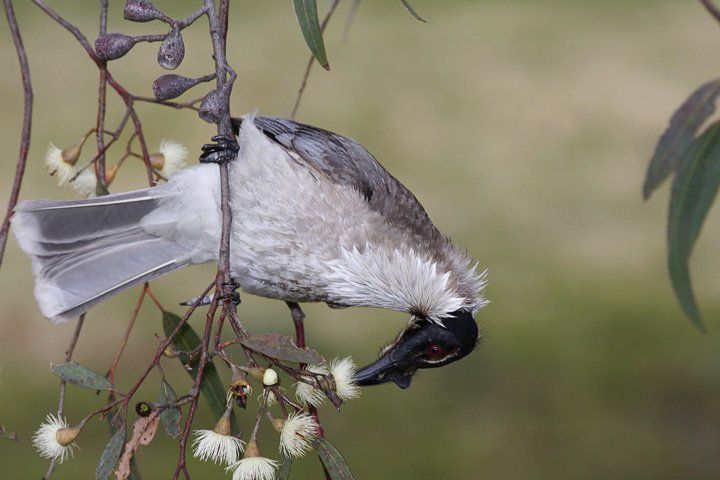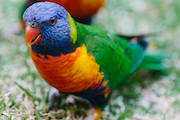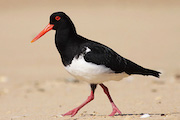Noisy friarbird
It’s easy to recognise the noisy friarbird. This knob-billed honeyeater has a distinctive featherless dark grey head and a strong bill with a prominent casque (bump) at the base. It is a conspicuous bird of up to 36 centimetres, grey on top with a whitish underside.

Noisy friarbird
Where
You’ll often see these friarbirds feeding in noisy flocks, sometimes with other honeyeaters such as the red wattlebird. Look for them in forested and heathland areas - the forested sections of the headlands walks are a good place to start. They are mainly seen in small groups, usually up in trees. You may hear these noisy birds before you see them.
Feeding
The noisy friarbirds spend most of their time feeding on nectar high up in trees, only coming down to the ground occasionally to feed on insects.
Breeding
The noisy friarbirds form long-term pairs, with both parents defending the nest and surrounds. Often nesting in horizontal tree forks, the female meticulously builds a deep nest, lining it with leaves and wool and incubating the eggs alone. At Booderee the noisy friarbirds tend to nest in forests, with both parents feeding the young.
Sounds
Many loud, harsh calls which sound like four o’clock and p’chok.
Stay in touch
Subscribe to receive important updates about Booderee National Park.




